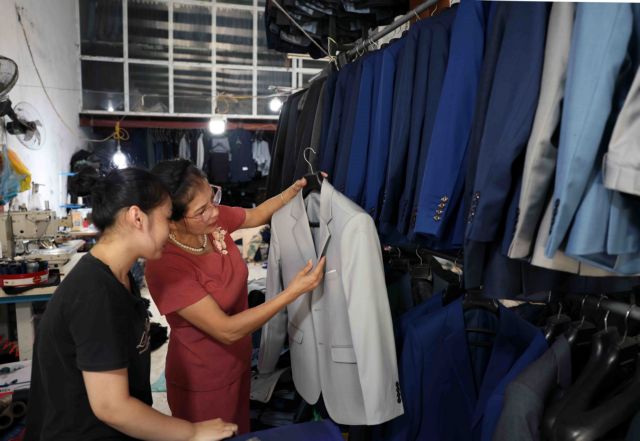 Economy
Economy

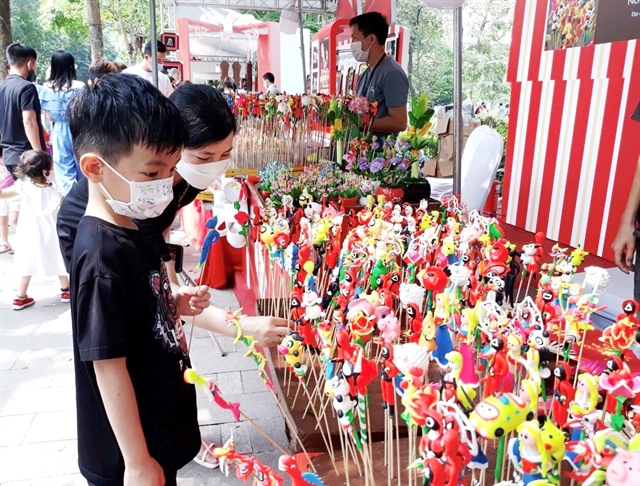 |
| Xuân La Village in Phú Xuyên District has long been famous for making toy figurines from rice dough. — Photo courtesy of Phú Xuyên People's Committee |
HÀ NỘI Phú Xuyên District, located 30 kilometres south of Hà Nội, is renowned as the 'land of hundreds of crafts', with all 154 villages engaged in various trades.
Among these, 43 villages have been recognised as traditional craft villages, like Chuyên Mỹ which makes mother-of-pearl inlay, Vân Từ famous for tailoring, Phú Túc for grass weaving, Xuân La renowned for toy figurines, Tân Dân for fine woodcraft, and Phú Yên for leather shoes, among others.
The traditional craft villages in Phú Xuyên have played a significant role in the local economy, closely linked to the development of craft tourism.
Arriving in any villages in Phú Xuyên, visitors will encounter the lively, bustling atmosphere of craftsmanship.
The Vân Từ Commune was once an agricultural region, but its tailoring has helped it flourish into a renowned traditional craft village.
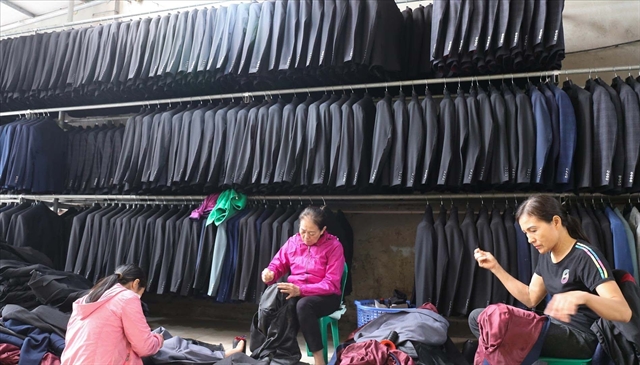 |
| Vân Từ villagers make suits that are famed nationwide. — Photo courtesy of Phú Xuyên People's Committee |
The locality is the birthplace of many talented artisans and the garments made here are found in markets both at home and abroad. Many families have grown their business from a small shop to become well-known companies with established brands in the market.
The traditional craft village of Phú Túc specialises in weaving products made from a unique material, cỏ tế, or forked fern. After nearly 400 years of development, Phú Túc boasts over 1,000 product designs primarily made from the plant and other materials such as corn husks, banana leaves and water hyacinth.
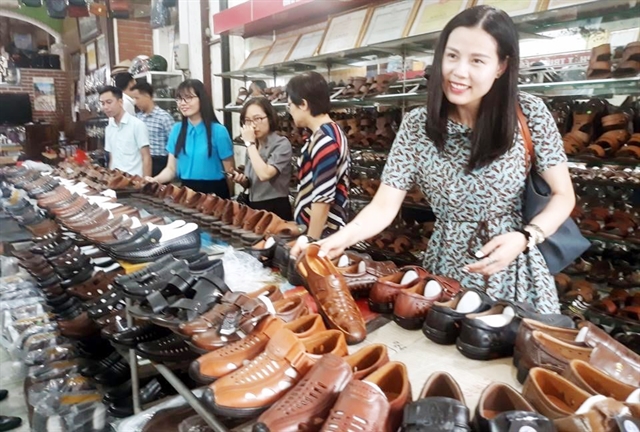 |
| Phú Yên Village in Phú Xuyên is renowned for leather shoes. — Photo courtesy of Phú Xuyên People's Committee |
Visiting the village and witnessing the weaving process first hand reveals the incredible diversity in shapes and designs. From baskets, cabinets, tables and chairs to picture frames, vases and decorative objects, a variety of colourful items with high aesthetic values are created through the skilled hands of artisans.
In Chuyên Mỹ Village, visitors watch artisans transform seemingly base materials like sea shells into beautiful items on a wooden base. The products are diverse, ranging from household utensils to paintings.
Tourism development
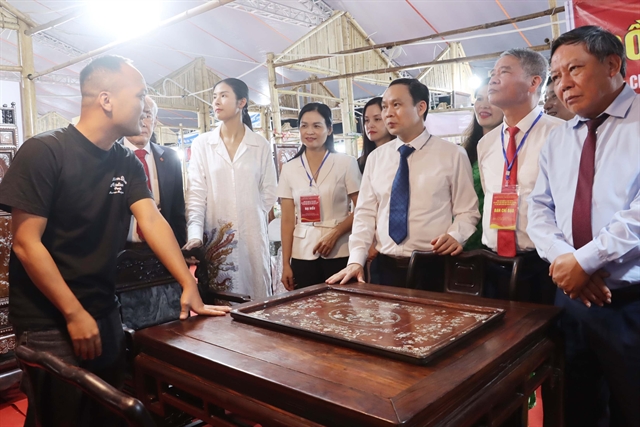 |
| Lê Văn Bính, chairman of the People's Committee of Phú Xuyên District (third from right) views mother-of-pearl inlay products made in Chuyên Mỹ Village. — Photo courtesy of Phú Xuyên People's Committee |
The preservation and development of traditional crafts in Phú Xuyên District have received significant attention from both Hà Nội City and the district authorities, resulting in many positive changes.
The Phú Xuyên District People's Committee [district administration] has supported the investment in constructing industrial clusters and particularly associated the development of craft villages with tourism.
The district has collaborated with the Department of Tourism and other units to survey and assess the current state of historical and cultural sites in the craft villages, to establish projects to improve the infrastructure and the environmental landscape, serving the development of craft village tourism from 2020 to 2030.
Each village has been upgraded with parking lots and display areas for products, to be part of a tourism route within the district.
The development of collective brand labels has also been emphasised. As a result, the district now has over 220 agricultural and handicraft products certified by the city as meeting One Commune, One Product (OCOP) standards of three to four stars.
"Developing craft villages in conjunction with tourism and exporting products to the global market is the strategic direction of the district,” said Lê Văn Bính, chairman of the People's Committee of Phú Xuyên District.
“The district has advantages in geographic location and transport connections to the centre of Hà Nội and neighbouring provinces, so local craft products have many opportunities for trade in both domestic and international markets.
“This not only helps promote the cultural identity of the district but also facilitates the development of tourism and handicrafts, contributing to the local economic development by creating jobs, increasing incomes and the living standards of the people,” he said. VNS